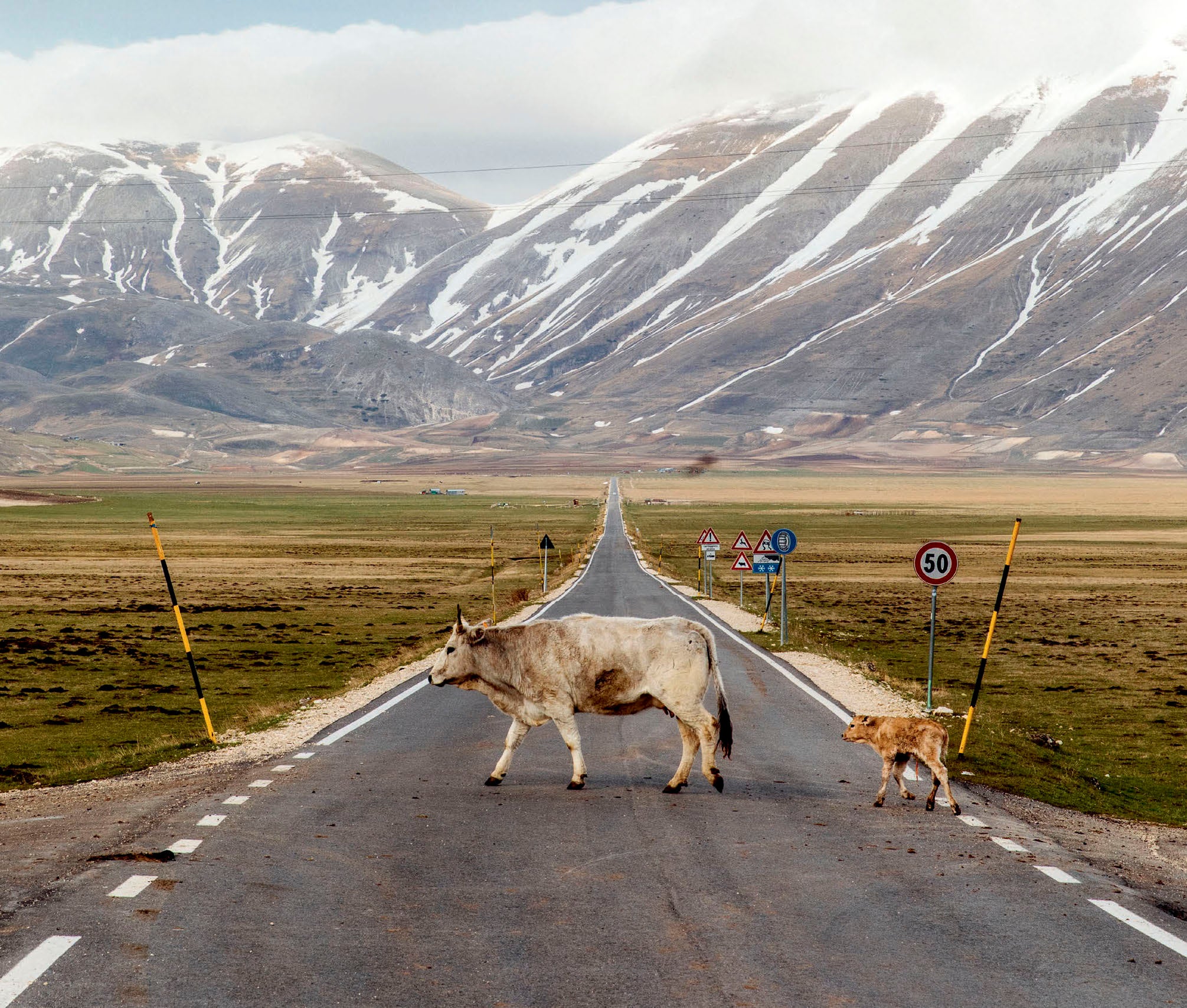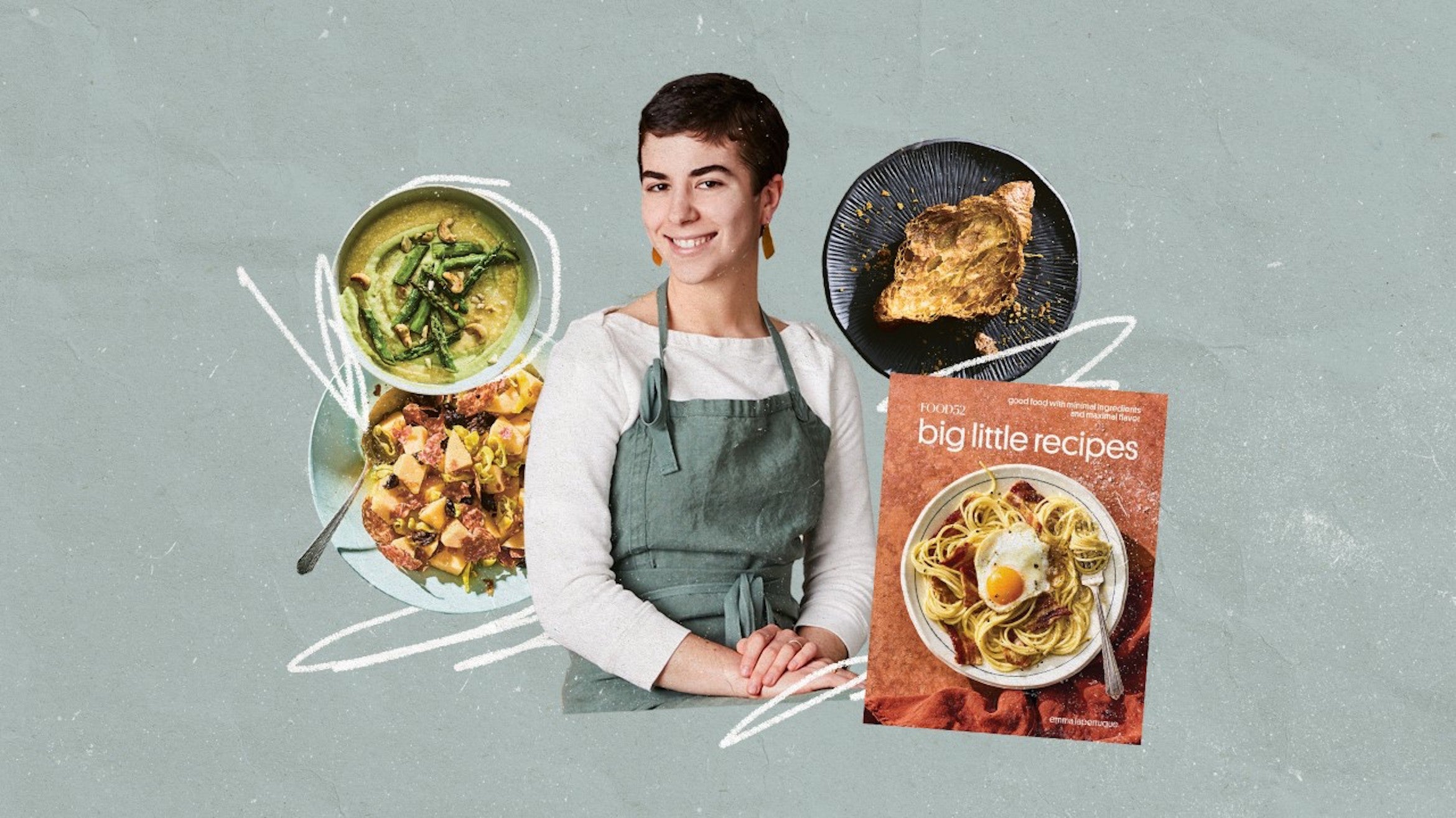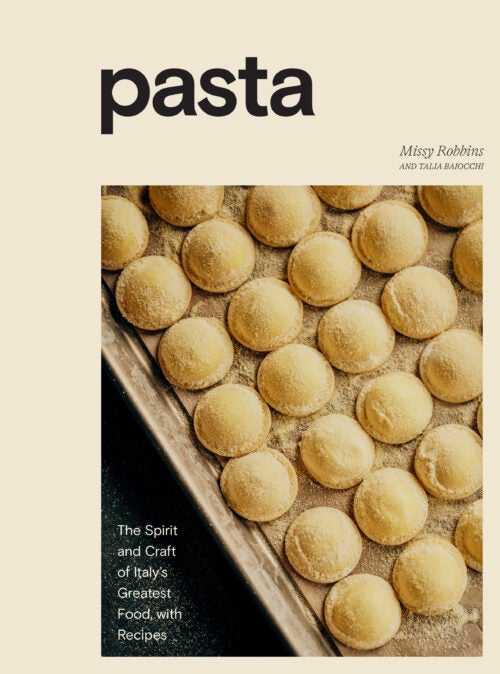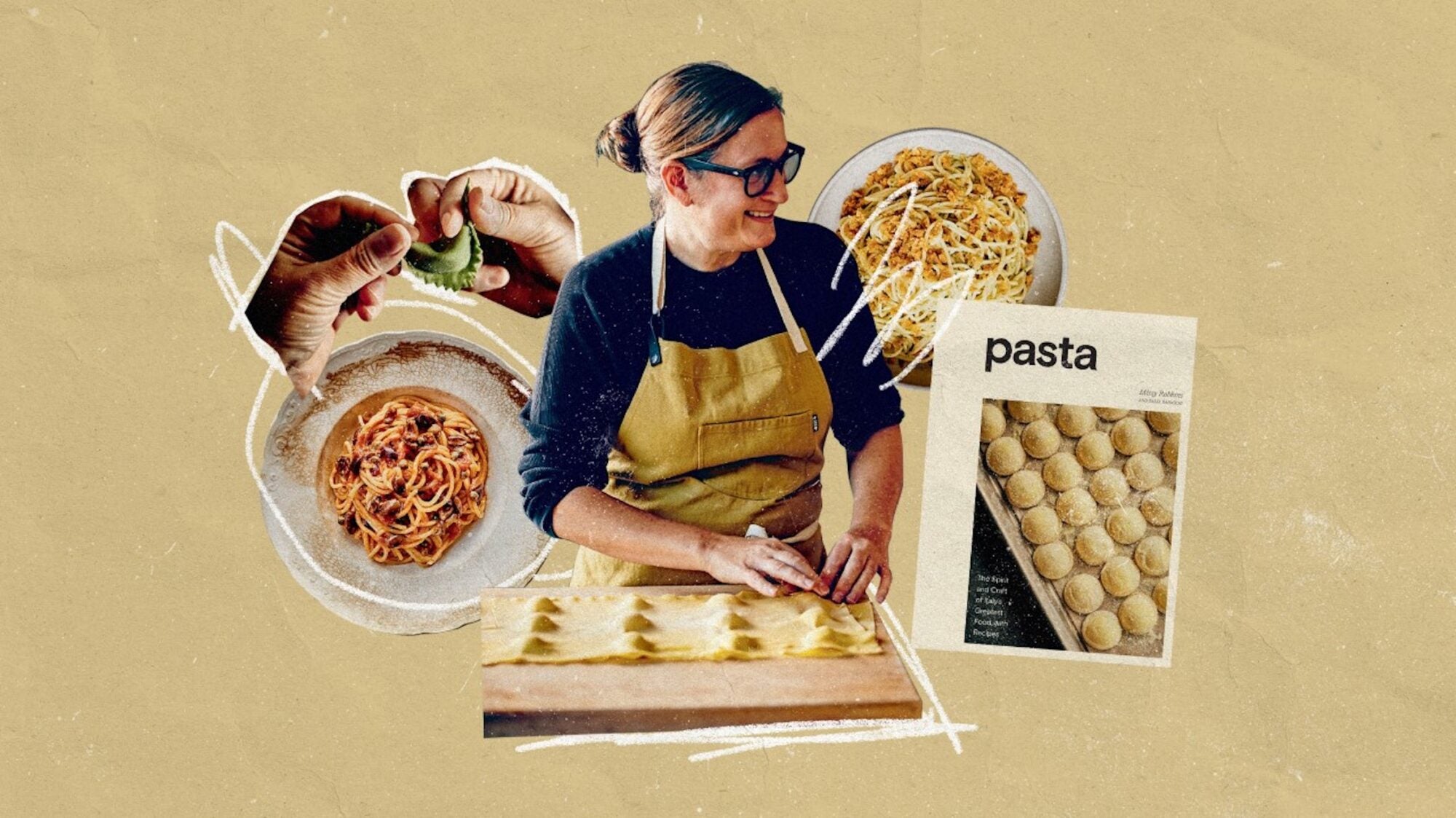
With 25 years of mafaldine mastery, culminating in a new cookbook, Missy Robbins pays tribute to Italy’s greatest food.
A new encyclopedic and soulful cookbook, Pasta, has set a fresh standard for how flour, water, and quanto basta lands on the printed page. “These are real cookbook goals,” I recently texted a Los Angeles chef friend, who is working on his own cookbook, moments after I had posted a few pages from the book on Instagram—including a striking image of a bull and calf on a lonely road in Umbria. A natural skeptic, he was asking if the book was any good. I summarized that, yes, the book was good, and also that he should smash his preferred book-buying link because he, a professional and a Franny’s and Momofuku alum, would pick up some real moves from the text. Pasta, many years and many bowls of rigatoni al diavolo in the making, from chef Missy Robbins and editor and author (and my former PUNCH and TASTE colleague) Talia Baiocchi, is a book for many readers.
This is a book of complex pasta mastery and less-complex saucing and flavor balance, and it unfolds in a serious of well-articulated acts. The first half tackles the cutting, stuffing, shaping, and cooking of pastas—as well as learning the difference between cannelloni, cappelletti, corzetti, and casarecce. (Get your flash cards ready.) The second half of the book, peppered with stunning in-situ photography from Stephan Alessi, brings together Robbins’s and Baiocchi’s months of research driving around the boot and Robbins’s years of professional apprenticeship in Emilia-Romagna and Friuli, and working at the legendary Spiaggia in Chicago, before running A Voce in New York for half a decade.
There are regional recipes for tortellini in brodo and gnudi alla fiorentina, along with modern classics that you may have spotted at Robbins’s two ghost-pepper-hot restaurants in Brooklyn, Lilia and Misi. In our recent interview, Robbins explains her method for pasta par excellence—and why you should never rinse your pasta. Ever, ever, ever.
Pasta could have been two books, with the pasta encyclopedia in the front—which has its own vibe and its own instructive nature—and then the regional dishes in the middle and back.
I think the regional dishes were the most fun to work on, because I developed most of those recipes for the book, and they’re not things that were in the restaurant or that I’ve necessarily done before. I mean, there were things I’ve cooked before, but I didn’t have real recipes. I just—literally five minutes ago—posted a picture of the agnolotti dal plin, and I’m not a huge filled-meat pasta fan. The challenge for me was, “You can’t do a pasta book that covers the north and not include agnolotti dal plin.” That’s not possible. So how do I make this mine and love it? It was the regional dishes that really made me think about how to pay homage to these dishes and respect the tradition of the dish but make them my own, so that I wanted to both cook them and eat them.
There are idiosyncrasies there, of course, in the regional pastas of Italy. And many of these recipes are not the Bolognese and cacio e pepes of the world, because you’ve got so many other regional dishes. Is there one dish that you felt like you’re bringing to light for the first time, or at least the first time in English, maybe?
Sure, I’ve made cacio e pepe a hundred thousand times, but I think it’s more that I’ve cooked a lot of these dishes through interpretation. I had never had casunziei, the beet and poppy seed pasta, in its place of origin. I’ve put it on menus since my Spiaggia days. But going there, and seeing it and understanding it, and understanding how regional it is in this one town? That, to me, was really special, because I feel like I finally understood. Obviously, I couldn’t hit every town for every pasta, but we traveled for six weeks.
Another one of my favorites that I developed for the book was the malloreddus with the pork and saffron sugo. When I nailed that one, I was like, “Holy shit, I’ve never tasted anything like this.” We put that one on the menu, and it sells really well. But it’s one of those moments where it’s never as good as the first time I made it. It’s great, but there’s still that taste memory of making it for the first time and being like, “Oh my God, this is so great.”
The espresso tagliolini—I love the headnote referencing how every coffee company in Italy has their own espresso dough. But then you’ve got a tagliolini with smoked ricotta and chiles—that’s a really cool recipe to read about.
I can’t remember if we told this part of the story in the book or not. That was a dish where I really did have that pasta sitting in my house from a trip to Venice for like two years. And I had this smoked ricotta from an amazing cheese producer, and I had the espresso pasta, and I said, “I think this could be really good together.” I was just fucking around—it was when Sean [Feeney, my business partner] still lived in the same building as me, and he used to come down and try stuff, and he was like, “That’s the dish. That’s gotta go on the opening menu.” But when I tried it for the opening menu, it didn’t work. It was so hard to execute that it’s never gone on the menu, because it’s never going to be right. But I really wanted to put it in the book, because I think it’s a cool dish . . . that probably no one will make. [Laughs.]
You write candidly about your upbringing in a kosher house in Connecticut. I have to ask, will you ever do a pasta with Kraft cheese?
Oh my God, yeah. I mean, my parents still keep kosher at home. They eat meat out and stuff, but I have not made Kraft Macaroni & Cheese. I will tell you—did you read the part about the milk spaghetti, and my mom?
I sure did! I loved that.
I developed a really good recipe for that a couple years ago. It didn’t go in the book, but I did one with—it was actually kind of crazy. I used really good tomato sauce, and sharp provolone, and mild provolone, and it tasted exactly like my mom’s—it just didn’t have disgusting ingredients. [Laughs.]
There seems to be this slight dividing line with pasta making. There’s this idea of the, quote, unquote, “no fucking machines” camp, and the “yes fucking machines” camp. And the sfoglino method, using a rolling pin, is cool, but you don’t follow that method in the book. You use a KitchenAid—a lot. So can you talk about that dividing line and how you came to that as a pasta maker?
I learned the sfoglino method in Italy, from ladies. That’s what I did every day when I worked there, in two of the places. But in two other places, I didn’t. I was always fascinated by it. But I think I toe the line. You can buy machines that form ravioli for you. You can buy machines that form orecchiette for you. You can buy machines that form the malloreddus for you. I’ll never do that, because I still believe in the handcraft, but I’ve worked in pretty high-volume restaurants for a long time now, and I think you pick and choose the real difference maker. I love making pasta in a well, you know? And I do it at home all the time. But doing that for 500 people a day isn’t necessarily practical.
You can make it for your family and friends, you know?
Yeah—the sfoglino method is really cool, but I think it’s romantic. I love it, and I love doing a lot of the hand shapes because they emulate that—it’s just different. Making orecchiette, you’re not doing a sfoglino, but you’re doing everything by hand. Same with gnocchi. You’re rolling out gnocchi, and you’re putting it on that board. The hand movement and the hand touch is still really important to me. But with the rolling of the sheets, I’m not sure there’s enough division for me between, “Oh, I can tell that’s a hand-rolled sheet,” versus, “That went through a machine.”
People like having assistance from machines, and people like buying machines, and I think your guide that has the KitchenAid measurements is so smart. That was cool.
Well, we really want people to use this book. I want people to be cooking from this book 20 years from now. I really hope it has those kind of legs. And I think that, if you only do a hand method, you’re getting those people that you talked about a few minutes ago, who are going to cook through every recipe, but you’re losing people who might want to make pasta on a Friday night for their family and be able to do it relatively quickly. We also talk about using dried pasta—because I think there are a lot of spaghetti recipes, for instance, in this book where you don’t have to extrude your own spaghetti, and the dish is still going to be amazing.
You definitely made that claim, and it’s clear that, in some of these, you can use dried pasta. By the way, what are your go-to brands?
I love Rustichella d’Abruzzo. I am a De Cecco fan, too. My go-to, if I’m in a grocery store and I need to pick up pasta quickly, is De Cecco. I think it’s really great. There are so many artisan brands out there now, and some of them are amazing, and some of them aren’t.
You have a “do not drain” rule for all your pasta cooking. I think that may surprise some of our readers. Tell us about that.
When you drain pasta, you get rid of all that beautiful starchy water. And that starchy water not only adds some flavor to the pasta, it also adds some texture.
Yeah! And God forbid you rinse it, which is what I grew up with.
Me too!
This interview has been condensed and edited for clarity. Italy photos by Stephan Alessi. Food photos by Kelly Puleio.
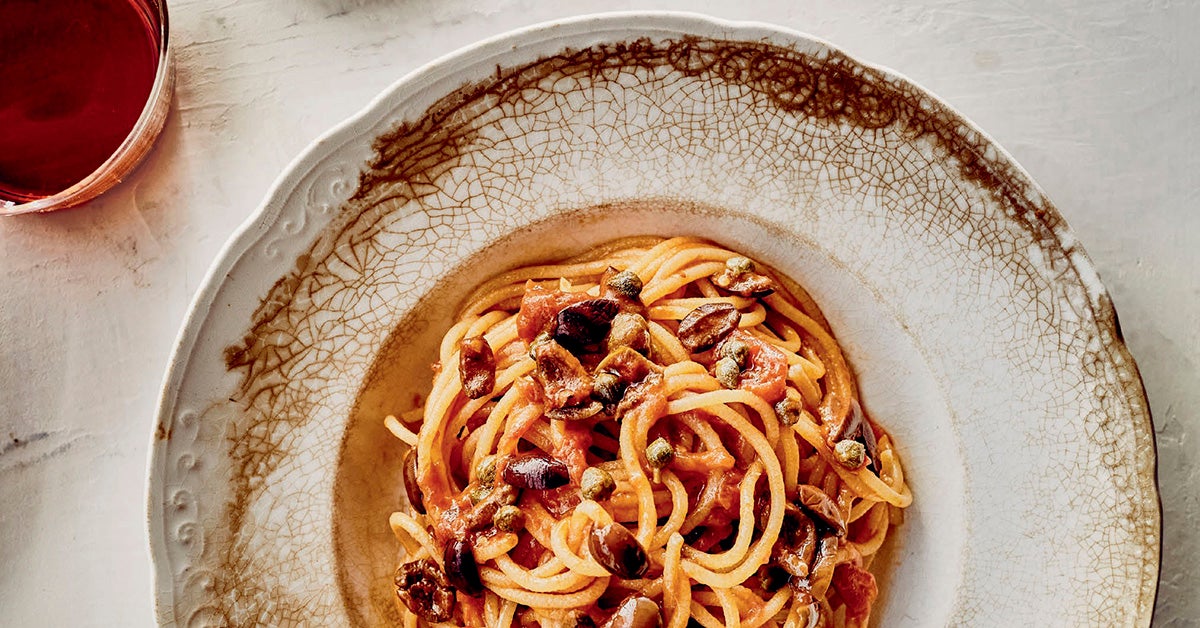
TWO EXCITING RECIPES FROM PASTA
Spaghetti alla Puttanesca
“The flavor of Naples is puttanesca, a true assault of pungency and salinity that is as outspoken and frenetic as the city itself.”
Spaghetti with Colatura, Garlic, and Bread Crumbs
“All along the coast of Campania, you’ll find spaghetti con la colatura di alici, which is essentially aglio e olio with a strong dose of colatura. It’s like spaghetti alle vongole without the clams and with twice the brine. This is a near-replica.”
MORE BOOKS TO BUY, READ, AND COOK FROM:
- Last week, we caught up with Emma Laperruque, whose new cookbook, Big Little Recipes, promises simple recipes for not-so-simple times.
- From one half of the cult comedy duo Tim and Eric comes Foodheim, Eric Wareheim’s culinary bible for modern food freaks, showing you how to throw epic parties, suck the marrow out of life, and cook better than your grandmother.
- In Cooking at Home, David Chang and Priya Krishna embrace frozen foods, the microwave, and improvising as you go.
- A few weeks back, we spoke to Carla Lalli Music about her great new cookbook, That Sounds So Good.
- Have you preordered Cookies: The New Classics? It’s a new book from Jesse Szewczyk that introduces 100 bold cookie recipes that take the gold-star standards beyond what you’ve ever known.
- Whether you participate in meatless Mondays, weekday vegetarianism, or just simply want to cook more delicious things without meat, Jenny Rosenstrach’s The Weekday Vegetarians has you covered.
